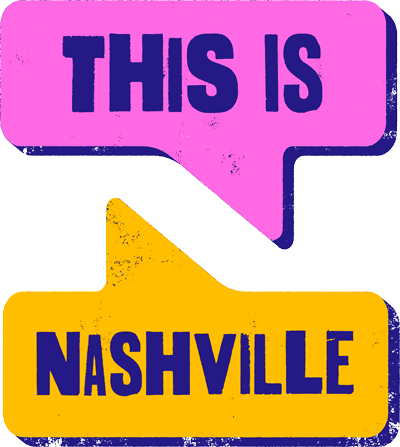
Every other Friday for This Is Nashville, I hop out of my host chair and into the passenger seat to ride shotgun with fellow Middle Tennesseans. For this edition, I copped a ride with hip-hop producer Derrick Farrior aka DTL Jams. He throws a weekly hip-hop producers meetup called Beat Street at LabCanna East. We pumped up the jams as we hit the streets of East Nashville and broke down the art of finding the perfect beat! Buckle up!
Hip-hop music would be nothing without the producer. They provide the beat that gets you moving.
Those drums on your favorite rap song? It was a producer that put that together.
While rappers or emcees get most of the spotlight for their verbal acrobatics, they would be all “spitting rhymes” a-cappella without the producer. For DTL (Derrick Tha Lyricist) Jams, bringing the beat is an essential part of life. He’s been making music his entire life. It all started when his father put him in front of a microphone for the first time at the age of three.
“We had a song that’s three years old called MC. Little D. So I’ve technically been rapping in studio since 1990,” says Farrior.
Rapping since 1990 makes him an “old head” by today’s hip-hop standards.
This Is Nashville: Tracing Nashville’s hip-hop roots
Farrior, kept up with his passion for music when he would play around with his father’s music production gear while his dad was at work. He was working with a Roland RW 30, an early sampler that required a bevy of floppy disks to save music projects. It was capable of storing about seven seconds of sample time. Today’s samplers are one thousand times more powerful than those of the late 80’s and early 90’s. But with patience, a trained ear and some knowhow, a dedicated producer can make a classic beat.
For Farrior, his beats are about having a unique and original sound. He calls his sound psycho rap.
He say, “Yeah, it was just like psychedelic rap, very far out sounds and oddball samples.”

Super producers like Madlib, Dilla, Alchemist, Timbaland and The Neptunes are his biggest influences.
Some artists like to push the norm and have their music sound iconic and unique to their artistic vision. Others lend their songs closer to what is currently popular. Farrior, likes to do his own thing.
He explains: “I try to stay as far away from the mainstream sound as possible, which kind of alienates me from a lot of artists because a lot of artists like to chase what’s current and what’s now.”
One of his main sources of creation is the use of samples. That is when an artist uses a segment of another recording as a part of their own. That sound can be taken from anywhere — YouTube, Spotify, even old movies on VHS.
The most popular form of sampling comes from grabbing sounds from vinyl records. That is where Farrior’s experience as a DJ comes in handy.
For years, the use of samples have been argued in legal and creative circles. Some believe it is stealing the intellectual property of another and an easy way for people without musical ability to make songs of their own. Others feel that sampling takes an established work and re-imagines it, creating something new and exciting.
Take the J Dilla produced track Climax by Slum Village. It samples from the Al B’ Sure’s hit 1998 release “Night and Day.” The sample is unrecognizable. It would be a challenge for the world’s best musicologists to figure out what J Dilla did to the original.
It is this type of sonic manipulation like that inspires Farrior to learn more about the artist that is being sampled. He lovingly goes down a musical wormhole.
“As a fan of music, it’s my job to find the original. Listen to the original. Listen to the artist’s album, that album (it) came from. I’m gonna go back to the first album, and that’s just how that’s how I operate,” he says.


